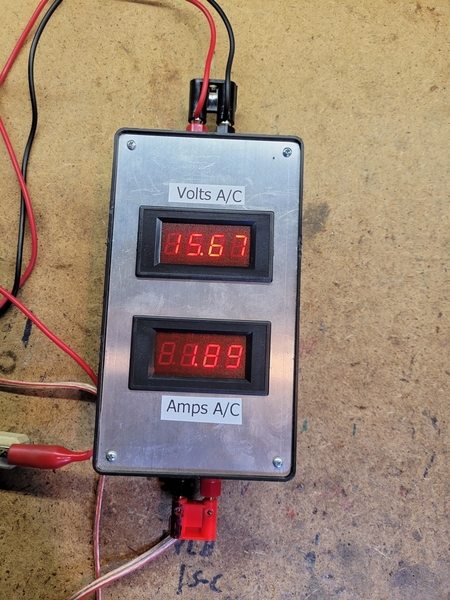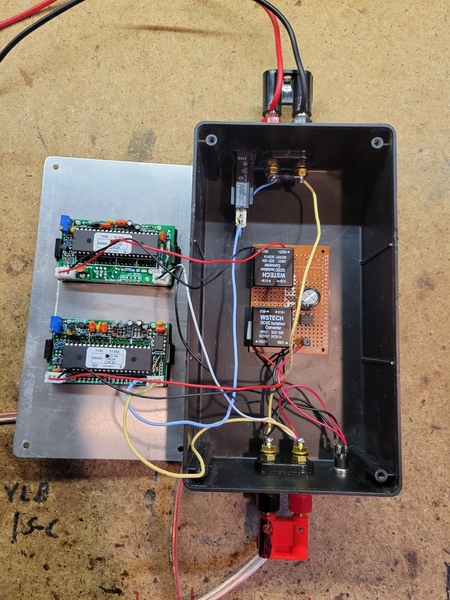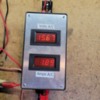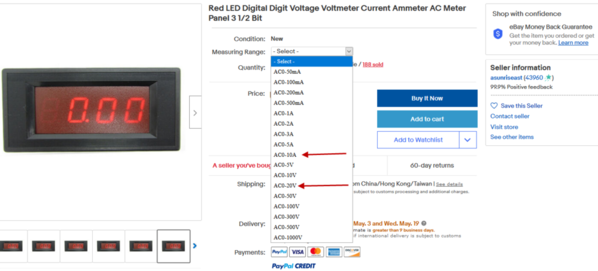I recently changed my bench transformer for an MRC Pure Power, and I thought now that I have real sine wave output, the digital meters I found on eBay would actually be reasonably accurate. That being the case, I set about building a box to house them and also a universal power scheme. When I'm working on a locomotive on the bench, I really like to be able to monitor the voltage and even more importantly, the current. I've been digging out a clamp-on to do this job, but with this box, I'll have the information anytime I connect the test track.
Since these digital meters require a separate and isolated power source, I dug out a couple of electrically isolated DC-DC buck converters, they take up to 30 VDC and output a nice clean 5VDC. In order to have the utmost flexibility, I also added a AC/DC power jack for separate power, and if there isn't separate power, they're powered from the input AC power being monitored. The AC/DC power components include a 22uh choke to prevent my internal power supply for the meters from compromising the MTH DCS signal, a bridge rectifier, and a large electrolytic cap. Finally, I added a 6A circuit breaker and a TVS across the output.
















